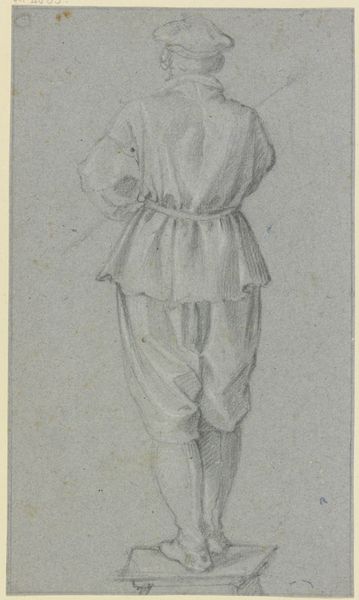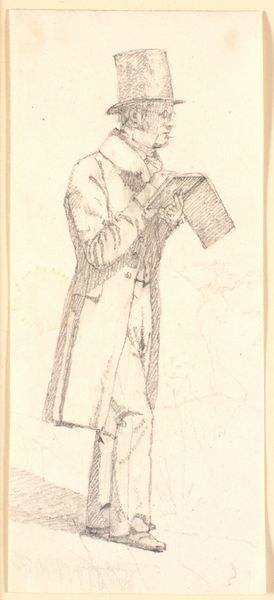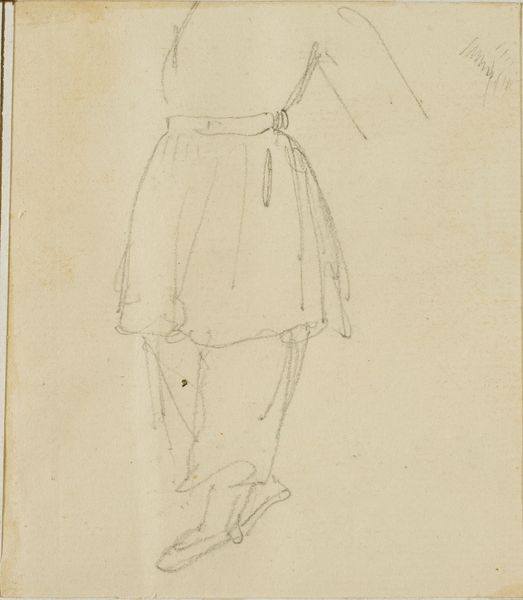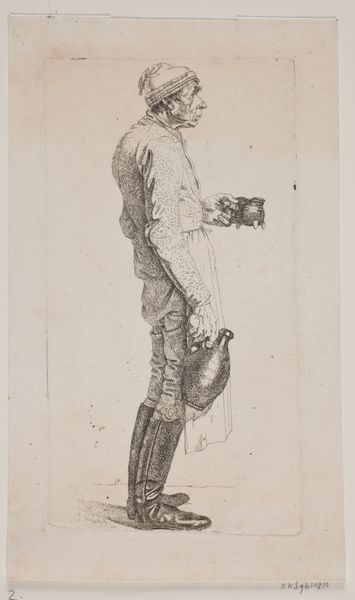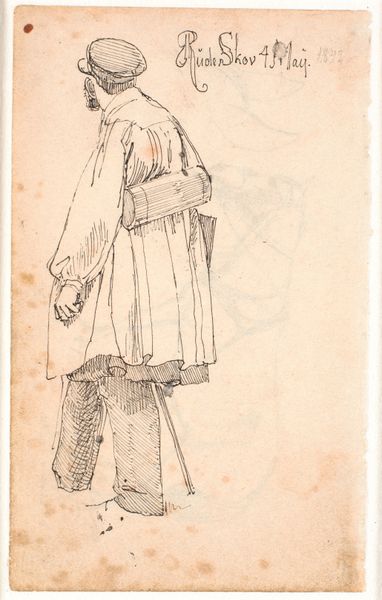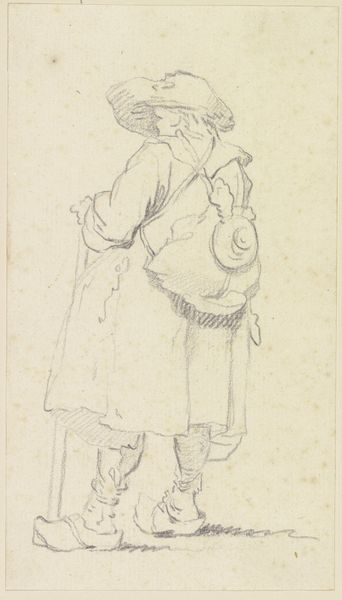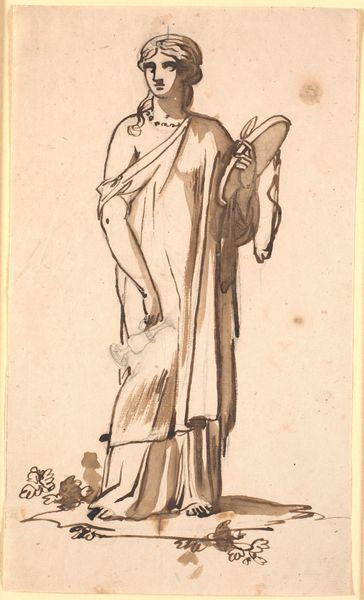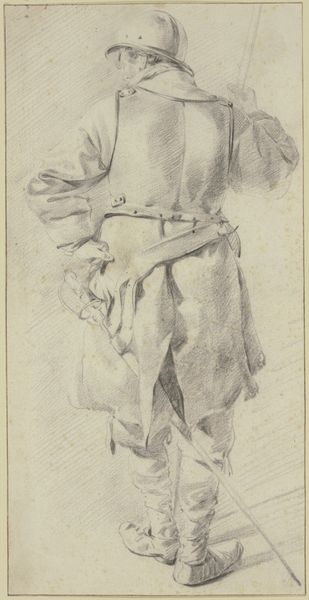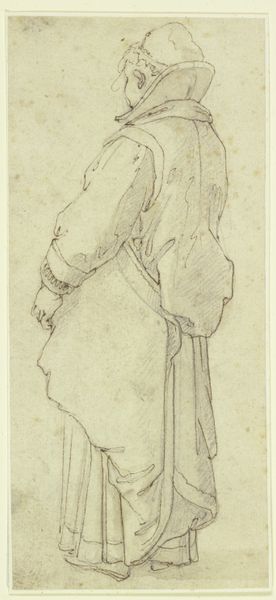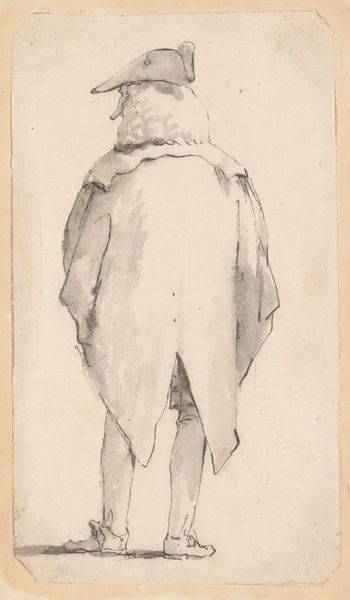
drawing, print, pencil
#
portrait
#
drawing
#
neoclacissism
# print
#
caricature
#
pencil sketch
#
pencil
Dimensions: 16 3/4 x 9 5/16 in. (42.6 x 23.7 cm)
Copyright: Public Domain
Editor: We’re looking at a drawing by François André Vincent titled "Caricature of Joseph-Benoît Suvée," created sometime between 1764 and 1816. It's a pencil sketch. The figure's slightly awkward posture and oversized coat give it a really humorous feel. How do you interpret this work? Curator: This piece offers a fascinating glimpse into the art world politics of the late 18th and early 19th centuries. Caricature, then and now, is a potent tool for social commentary. By exaggerating Suvée's physical form – the billowing coat, the slightly ungainly legs – Vincent could be subtly critiquing Suvée's artistic style or perhaps even his position within the French art establishment. Editor: That’s interesting. So, it’s not just a funny drawing but potentially a statement? Curator: Precisely. Consider the Neoclassical movement, in which both artists were working. It had very specific ideas about ideal form and presentation. This caricature subverts those ideals, perhaps signaling a disagreement with the established norms or a critique of Suvée's adherence to them. We need to remember, artistic circles are rife with competition and differing opinions! What does the fact that we’re seeing it in a museum today say about the institution and the work? Editor: Hmm, I guess displaying it now, in the Met, gives the work legitimacy and historical value. Even a critique becomes part of the accepted narrative. Curator: Exactly. Museums often sanitize conflict, presenting potentially subversive works as historical artifacts, their original bite somewhat softened. It prompts us to consider: whose perspective are we seeing and how does institutional display shape that understanding? Editor: I never thought about the politics within a drawing like this. It gives the work so much more depth. Curator: And highlights the role of institutions in shaping our perception of art. A simple caricature becomes a lens through which to view power dynamics and the ever-evolving narrative of art history.
Comments
No comments
Be the first to comment and join the conversation on the ultimate creative platform.

